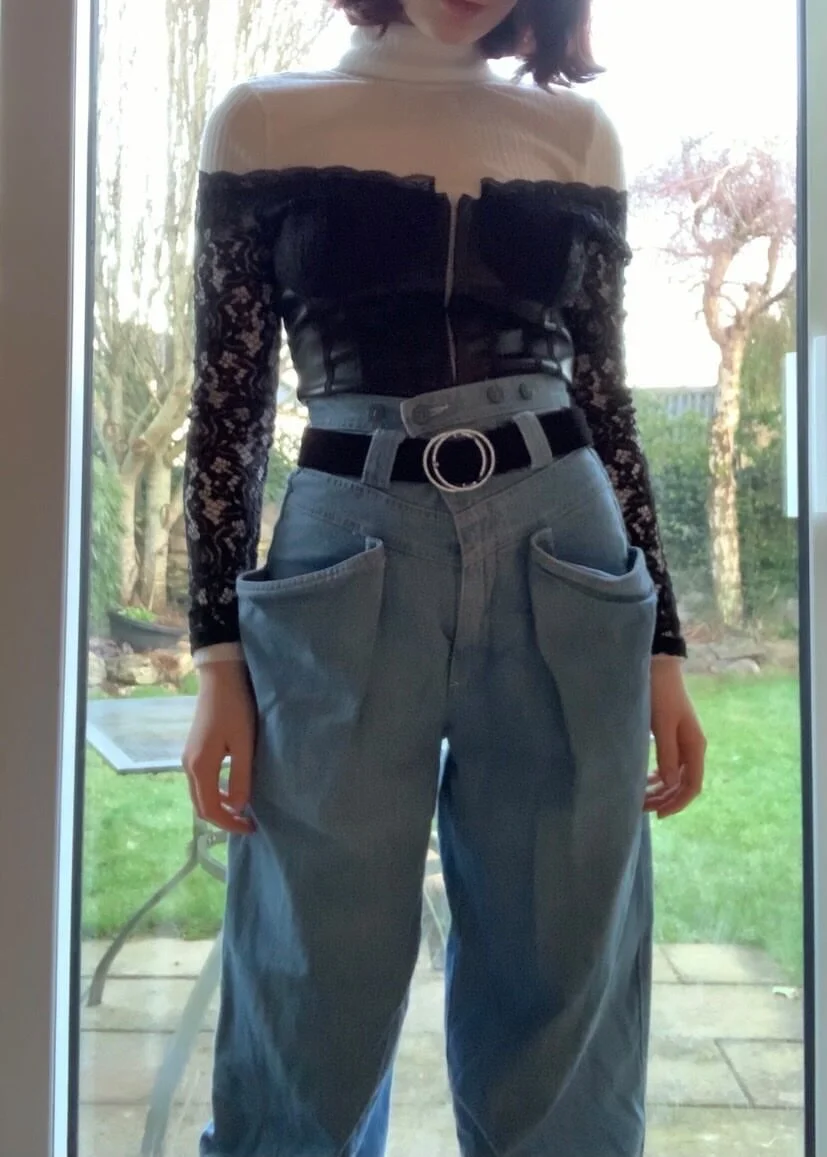Your Guide To A Sustainable Wardrobe
By Jenny Dillon
The discussion of slow fashion has grown exponentially over the last few months. Often all the information can be quite overwhelming and it’s difficult to know where to start. Sometimes sustainable options are not accessible for everyone which is important to acknowledge, but I’m about to share my best tips and tricks to begin your journey to a sustainable wardrobe.
Some beautiful sustainable bits modelled by Jenny! Firstly, think before throwing anything away. Tonnes of clothes end up in landfill every year and there are plenty of better options than the bin. The first and maybe the most obvious, is to donate them. You can bring your preloved clothes to charity shops, clothes banks or even a friend who loves your style! You could also learn a little bit of sewing or embroidery, which is a great way to upcycle some old pieces. I personally love fabric markers. There are plenty of tutorials online with step-by-step guides. One of my favourite YouTube channels is Fashion Wizardry, and it has a wonderful range of upcycling ideas.
This brings me to my next tip, which is to download Pinterest. Creating a selection of outfits that you admire or would like to recreate can really help you know what kind of style you like and what specific items you’re looking for. The outfits do not have to match or fit into one particular ‘aesthetic’, the purpose of this is just to try help you discover what your favourite colours are, what kind of clothes you like, and to help you discover new items and styles you’ve never experimented with before.
Pinterest can also really help with the next step: have a plan. When you do need some new clothes, decide what you're looking for and have a few pieces you want in mind. You could even make a list of things you needed and go from there. This can also help you avoid impulse buying, which is quite tempting right now during lockdown. If you do see something you really love that wasn’t in the original plan and you aren’t sure whether it’s an impulse buy, I recommend sleeping on it for a few days.
PINTEREST BOARDS
The next thing I’m going to talk about is where to buy your clothes from. The best option are charity shops. Most will have a €1 or €2 rail and a plus-size section. Now whether the charity shops have ‘good’ clothes or not depends on where you live. If you’re finding it difficult to find clothes you like, I recommend planning a day trip with a few friends to a bigger town or city to have a look in the charity shops there instead. If you can’t really find a lot of clothes in your size, this where that little bit of sewing I mentioned earlier might come in handy. Learning some simple alterations can really widen your options. Again, there are loads of videos online on how to both downsize and upsize clothes. Lindsey Foust on YouTube has two videos for downsizing and upsizing jeans which I find easy to follow.
The next best thing is online sites such as eBay, Depop, and Esty. Enable Ireland has an eBay account and sells kilo bags of second-hand clothes. Unfortunately, their sizing is a little limited, but I would still recommend looking for similar charities that sell on eBay or other online platforms. Depop is great for clothes and has a feature that allows you to filter your searches so only items within your price and size range will appear. Etsy is better for accessories and you can find lots of small artists on both platforms. Alternatively, many small businesses will also take orders from their Instagram or Facebook accounts. Make sure to always pay with a service that offers customer protection, such as PayPal, in case anything goes wrong.
That’s all I have for now; I wish you good luck in your sustainable fashion journey and I hope this guide was at least a little helpful!






